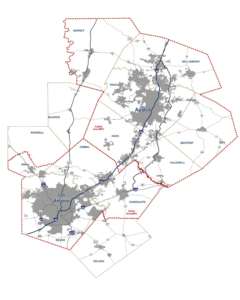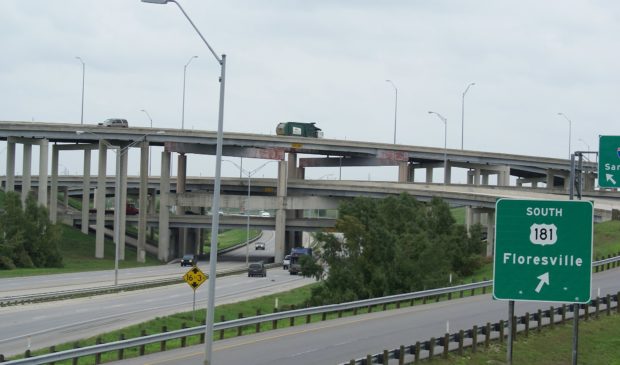Study addresses mobility needs along I-35 corridor
Wednesday, January 23, 2019 by
Ryan Thornton The Texas Department of Transportation is putting the finishing touches on its Capital-Alamo Connections Study, a collaborative effort between TxDOT, the Capital Area Metropolitan Planning Organization and the Alamo Area Metropolitan Planning Organization that began in 2017.
By analyzing inter-regional travel patterns, market conditions and future growth projections, the study is meant to improve mobility by identifying infrastructure, policy and technology solutions. These solutions are broken down in the study and given a general timeline for implementation somewhere between now and 2045.
The original impetus for the study came in October 2016, when Union Pacific abandoned its collaborative exploration of commuter rail service with the Lone Star Rail District to focus on freight transportation. Rather than preserve the commuter rail district and hold out for new future opportunities, CAMPO’s Transportation Policy Board dissolved the group following Union Pacific’s exit, effectively killing the possibility for efficient commuter rail service between Austin and San Antonio.
During an interview with the Monitor in December, Commissioner Brigid Shea, the only board member to abstain in the 18-0-1 vote to kill LSTAR, said that Union Pacific’s decision was “harmful, but not deadly” for the district. “It would have been possible to pursue other avenues if there had been the political will to do it,” she said. Rather than continue pursuing regional commuter rail, however, the board chose to explore other options based on the findings of a study to be led by TxDOT.
Roger Bell, TxDOT’s deputy director of the Transportation Planning and Programming Division, presented a summary of that study to the CAMPO board during its Jan. 14 meeting. Each board member was given a draft version of the final, bigger report that Bell said will shortly be finished.
“(What) we’ve found out is that there is a need for improvements along the corridor between the Austin and San Antonio areas,” he said. “We’ve recognized that there’s not a single solution, but a set of strategies that we need to look at to help relieve congestion and address safety between the two areas.”

The report cites the accelerated growth around the Interstate 35 corridor between Austin and San Antonio as one rationale to begin considering the area as an emerging mega-region similar to the Dallas-Fort Worth Metroplex today. As the report notes, I-35 in Austin is the third most congested roadway in the state and the region surrounding Austin and San Antonio hosts another 25 of the state’s top 100 congested roadways.
“We’re going to blink and it’s going to be one continuous community from Austin to San Antonio,” said Williamson County Commissioner Cynthia Long.
In addition to data analysis, the study also involved collaborative meetings including two joint workshops with the Transportation Policy Board of each MPO, two workshops involving each MPO’s Technical Advisory Committee, a series of stakeholder interviews, and three regional leadership workshops.
According to the report, the most common concerns raised during the stakeholder meetings were related to the use of technology, the need for increased local transit service and highway improvements. The report indicates, on the other hand, that the most pressing concern of each MPO is the need for modal options in regional transportation. According to Bell, the MPOs became increasingly concerned over the course of the study with the timeline behind the solutions being discussed.
At the final joint MPO-TPB workshop in December 2018, Bell said the focus was really on when these strategies would be implemented. “The general consensus was that we need to speed them up,” he said.
Once revisions are finalized, the full document will be posted on TxDOT’s website.
“This is just the beginning,” said CAMPO Chair Will Conley. “This is a 100,000-foot evaluation on ways in which the state of Texas and our region can move forward and I’m excited about those opportunities and excited about what we’ll do here in the very near future.”
Photo by Holderca1 [CC BY 2.0], from Wikimedia Commons. Map courtesy of CAMPO.
The Austin Monitor’s work is made possible by donations from the community. Though our reporting covers donors from time to time, we are careful to keep business and editorial efforts separate while maintaining transparency. A complete list of donors is available here, and our code of ethics is explained here.
You're a community leader
And we’re honored you look to us for serious, in-depth news. You know a strong community needs local and dedicated watchdog reporting. We’re here for you and that won’t change. Now will you take the powerful next step and support our nonprofit news organization?








